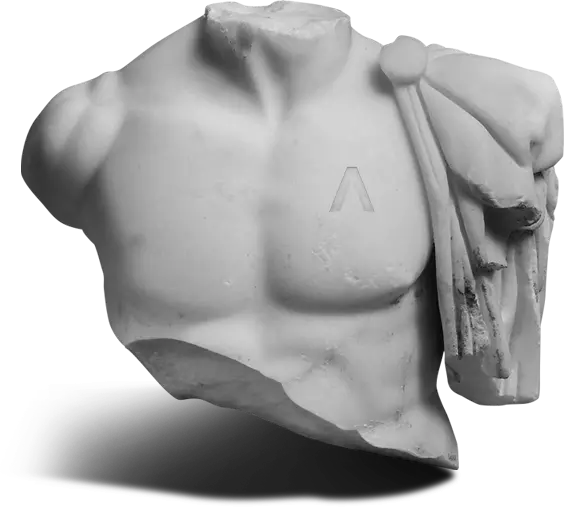Nutrition Institute
Open Source CMS
for 20 FMCG websites
Project essence
- 3X increase in the speed of feature delivery
- 10X faster time-to-market of new websites
- 10X decrease in the number of bugs
- In 77% of cases the security scan is passed on the first try
- 100% GDPR, mobile, and SEO friendly
Project background
Client
Our client is an international nutrition institute founded by a large corporation to promote its products. It is a B2B organization whose target audience is healthcare professionals.
Project history
The Institute managed 20 websites that are available in 10 different languages and were administered by healthcare practitioners with no technical background. Their primary goal was to create effective professional communication and deeply understand healthcare issues. Therefore, the company outsourced the website-related work to local digital agencies.
However, there was a problem with local agencies as well. The websites were initially written in the Sitefinity monolithic system, which did not allow the Institute to give local contractors' access to it.
When the regional offices turned to the Software Development Department of the head office, they discovered that hiring a developer would cost them $400 per hour. Thus, the budget constraints made it possible to contract no more than one expert.
With these circumstances, each task was completed with a six-month delay. The company experienced a lack of flexibility and failure to innovate. At the time of contacting us, it was the corporation branch with the lowest level of digitalization.
Project key goals
- Accelerate the delivery of functionality for regional offices.
- Enable business users to access and work with corporate websites.
- Create a favorable environment for implementing innovations.
- Move sites to Drupal to reduce the technical support cost.
Why Drupal
1. Switching from Sitefinity to Drupal is part of the corporation's strategy. The company's developers have expertise in Open Source projects. In addition, they have already established security review processes.
2. The Institute itself was interested in the move to Drupal. It allows them to gain more knowledge and experience in managing Drupal websites from other corporation branches and provides the potential and mutual benefits of innovations.
How Attico got involved in the project
The Institute was looking for a contractor with robust expertise in digital transformation. The contractor had to have a high level of technical skills and a team that could advise on the development issues.
Attico has already worked with one of the corporation’s branches. They recommended us as a professional team, easy to cooperate with, and who deliver genuinely amazing results.
Challenges of FMCG brand websites
Situation analysis
We had to deal with 20 websites divided across 10 regions, depending on the language group.
These websites were written in the Sitefinity monolithic system. It means they functioned only within the given system, which received all user data.
Disadvantages of a monolithic system
The most obvious drawback of a monolithic system is that it fails and is unable to upgrade locally.
Websites contained multilingual content, which constantly needed to be translated. In addition, each country has its own medical law, which concerns the prerogatives and responsibilities of medical professionals.
Thus, it was crucial to make websites more flexible and custom-built to comply with local medical legislation.
Within the monolithic system, these changes took a lot of time. A tiny change on any website affected the entire system. To this extent, the crash of any website negatively influenced the rest.

Open Source CMS features
The Institute's websites allow users to create personal accounts that may contain information about their interests, location, etc. Besides, it is a personal control center where users can set the frequency of receiving subscriptions, choose the most convenient communication channels, and exploit other extra services.
The Institute's platform is integrated with online learning systems, designed for online training. With the platform, users can visit group and tutoring sessions, take courses and tests, track their progress, and receive certificates.
In addition, the websites contain a lot of educational content for medical professionals, including evidence-based clinical and medical studies, articles, podcasts, webinars, and online events.
Due to content personalization, local offices can significantly optimize their digital marketing strategies since it enables them to customize display ads, define the target market, and reach a target audience more effectively.
Attico experts have also designed a more convenient admin panel for content editors by simplifying website content creation, eliminating the filling out of long and complicated questionnaires, and adding the ability to share content between corporate websites.
The functional features of each local website were developed to conform fully to the legislation of those countries.
For instance, in Brazil, a contact form must contain a line to specify the doctor's CPF. In addition, the website must be integrated with the Ministry of Health of Brazil.
To operate in China, the company must integrate its websites with WeChat and Tencent.
of personalization
By employing an AI engine, our team made the system able to deliver relevant content based on the users' interests and preferences.
Thanks to user data, our system carries out audience segmentation and generates the right offer and marketing approach for each segment.
But our experts go further. They created the platform architecture to tailor different types of content to individual users (not groups), based on their personal interests. Our primary goal is to achieve incredibly accurate personalization: a variety of options for all occasions, for all specific case scenarios.
For a full-text search, we use Solr, the open-source search platform that offers a flexible and easy-to-customize set of features. For example, our websites recommend visitors content on the same issues and on related ones. The engine itself thinks out all the recommendations, and the use of the Open Source allows the changing of settings and algorithms flexibly.
The biggest technical hurdle lies in the integration between the super platform and Salesforce. Actually, Salesforce.com does not allow outside developers to interfere within its ecosystem. Therefore, our experts had to upload user data to an FTP server to be added and synced by Salesforce specialists.
It was a serious technical problem as we have to handle a huge amount of data and run dozens of marketing campaigns.
Solution: Open Source CMS for the FMCG industry
Our cooperation started with an in-depth business analysis that highlighted the variety of drawbacks of the Sitefinity monolithic system.
The first thing suggested at the very outset was to divide the monolithic system into a microservice one using Drupal technology.
Our experts have created a common CMS – a flexible and secure super platform. Despite the common core, all websites operate independently of each other.
The super platform is under the full control of the main office. However, local managers can hire regional contractors to customize a separate website. A wide array of Institute divisions can implement safe innovations by uploading podcasts, video broadcasts, and webinars.
The development of the super platform assisted in solving the problem of centralization. The Attico team designed a common core managed by a tech specialist from the company’s headquarters.
Simultaneously, we helped solve one of the Institute's root problems – the lack of resources in the main office. Due to the limited budget, the company could hire only one developer. The creation of the super platform made it possible to free up the budget and to hire two more developers to support and perform customization tasks.
This number of tech specialists is quite sufficient for the Institute to fulfill its development needs.
FURTHER DEVELOPMENT OF THE PROJECT

Next stage: innovations
The previous stages covered the corporation's basic needs related to website administration, content, and design. Now we are starting the next phase of innovation.
We plan to develop a search engine with smart AI algorithms to work with data and achieve more accurate content personalization.
Data collection
We are currently working on replacing Google Analytics with Matomo, an alternative Open Source service. Matomo is great for corporate CMS as it provides complete control over the data and meaning it doesn’t have to comply with Google’s rules.
Our experts will be able to configure Open Source analytics for collecting and processing data flexibly. As a result, the performance-enhancing data can be used and controlled by our client alone. Without tips, Google will be unable to promote competitors' products to our target audience.
Joint projects
Attico cooperates with several branches of the corporation. The projects of separate branches have a shared server. Therefore, our partners and we joined forces to develop projects with high innovative potential. The corporation branches can share the development budget, as well as to operate the software together.
Corporate success
- The main office can solve the issue of centralization as the common core of the super platform is under its control.
- Local offices were able to flexibly, quickly, and efficiently implement safe innovations on their websites.
- The Institute's surplus funds made it possible to overcome a lack of resources and avoid this problem in the future.
Result in numbers
increase in the speed of feature delivery
faster time-to-market of new websites
decrease in the number of bugs
of cases the security scan is passed on the first try
GDPR, mobile, and SEO friendly











